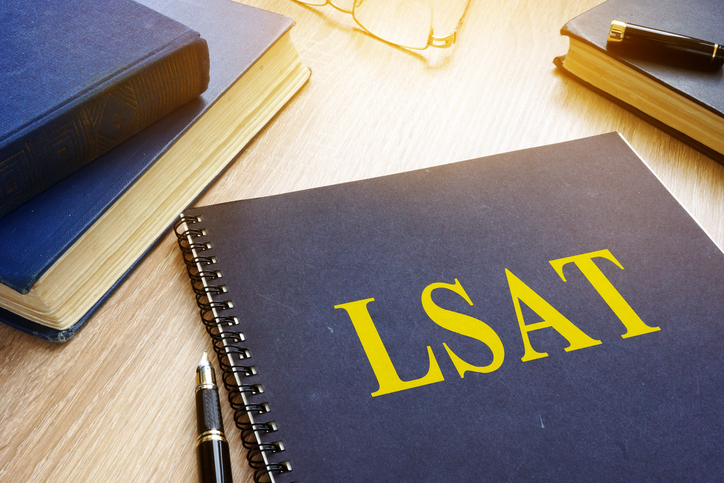Timing Matters

Education is an investment with easily-proven yields. Qualitative returns, like advancing one’s knowledge and becoming a better citizen, are certainly real and important, but questions also persist about quantitative value – the return on investment — given the costs (both direct and opportunity) associated with obtaining advanced degrees. While this article focuses on the latter, no one considering law school should forget to factor in the enriching rewards of doctoral education in the law in both improving and broadening one’s outlook and opening doors to community leadership, a wide range of employment options, and personal attainment.
A 15-year study by the US Department of Education established the direct quantitative value of higher education in enhanced immediate earnings:
“For young adults ages 25–34 who worked full time, year round, higher educational attainment was associated with higher median earnings;1 this pattern was consistent from 2000 through 2015. For example, in 2015 the median earnings of young adults with a bachelor’s degree ($50,000) were 64 percent higher than those of young adult high school completers ($30,500). The median earnings of young adult high school completers were 22 percent higher than those of young adults who did not complete high school ($25,000). In addition, median earnings of young adults with a master’s or higher degree were $60,000 in 2015, some 20 percent higher than those of young adults with a bachelor’s degree. This pattern of higher earnings associated with higher levels of educational attainment also held for both male and female young adults as well as for White, Black, Hispanic, and Asian young adults.”
Fast Facts: Income of Young Adults. National Center for Education Statistics. (Retrieved September 1, 2018 from https://nces.ed.gov/fastfacts/display.asp?id=77)
The cautious investor in financial and equity markets seeks “value” — a term Warren Buffet popularized but didn’t invent. For that we go back to Benjamin Graham, whose influential book “The Intelligent Investor” and earlier “Security Analysis” are still considered the gold standard for value investors. Graham pointed toward stable investments aimed at long term growth, underpriced stock, and careful analysis as the keys to finding values in the equity markets.
For education value, we look to the ratio of cost to outcomes, including the lifetime income outcome attributable directly to the credential enhancement, with a substantial qualitative “kicker” for non-tangible outcomes of education, like prestige, leadership in the community, the chance to serve, and the lifelong benefit of simply knowing more about important things (like law.)
Congressional Budget Office and University of Chicago labor and education market economist David Burk defines the economic value of a J.D. degree as:
“The economic value of a JD to a college-graduate is the difference between (1) the net present value of career earnings with a JD, and (2) the net present value of what the same person would earn over his career without a JD.”
Burk, David; Returns to Legal Education: Job Market Paper; November, 2014. (Retrieved September 1, 2018 from http://home.uchicago.edu/~dburk/jobmarketpaper.pdf)
He finds the after-tax average rate of return associated with obtaining a J.D. averages between 7 and 9 percent, depending on whether the law student graduated before or after the recession of 2008. (Returns have so far been lower for post-2008 graduates.) He concludes that this return for obtaining a J.D. exceeds the average rate of return from a similar investment in the stock market, estimated at a 5% annual rate. Returns vary when factors like school selection are considered, but Burk estimates that even J.D. degrees from lower-tier law schools yield positive returns — and similar average wage premiums — though much less than those accruing to high GPA graduates of top-tier schools.
Of course, Burk worked with data on average cost of legal education from 1997 that was dominated by ABA-approved law schools where annual tuition (at the time of the study) averaged $32,000, yielding a three-year present value of $93,000 (expressed in 2007 dollars, using a three percent discount rate.) Costs are likely much higher today in ABA-approved schools. The same calculation, using a 4-year part time degree model and an average annual tuition cost of $12,000 (the highest among online J.D. programs in California at this writing) would yield a present value of approximately $46,000, suggesting graduates of lower-cost programs would automatically enjoy a 50% better direct rate of return.
Education is considered counter-cyclical. That is, when the economy is booming, unemployment is low, and job opportunities and security are reliable, re-credentialing takes a backseat in consumer spending priority to increased consumption and leisure spending, and savings (as post-2008 savings rate data have shown.) Consumers inevitably time their return to school too late to be ready for the downturn when it comes, entering schools at or near the bottom of a downturn, when the reliable wage premium and insulation from labor market volatility provided by professional degrees would serve them most.
With the stock market at all-time highs, the search for value in stocks becomes harder and harder. Dollars invested today must overcome historic price-to-earnings ratios and company valuations of the kind Federal Reserve Chair Allan Greenspan referred to as “irrational exuberance” in 1996 and 1997 – just a few years before the great dot-com bubble collapsed. Students of history and the market will appreciate his comment again today:
“Participants in financial markets seem to believe that in the current benign environment the FOMC will succeed indefinitely. There is no evidence, however, that the business cycle has been repealed. Another recession will doubtless occur some day owing to circumstances that could not be, or at least were not, perceived by policymakers and financial market participants alike. History demonstrates that participants in financial markets are susceptible to waves of optimism, which can in turn foster a general process of asset-price inflation that can feed through into markets for goods and services. Excessive optimism sows the seeds of its own reversal in the form of imbalances that tend to grow over time. When unwarranted expectations ultimately are not realized, the unwinding of these financial excesses can act to amplify a downturn in economic activity, much as they can amplify the upswing. As you know, last December I put the question this way: “…how do we know when irrational exuberance has unduly escalated asset values, which then become subject to unexpected and prolonged contractions …?”
We have not been able, as yet, to provide a satisfying answer to this question, but there are reasons in the current environment to keep this question on the table.”
Testimony of Chairman Alan Greenspan; The Federal Reserve’s semiannual monetary policy report. Before the Committee on Banking, Housing, and Urban Affairs, U.S. Senate, February 26, 1997 (Retrieved September 1, 2018 from: https://www.federalreserve.gov/boarddocs/hh/1997/february/testimony.htm)
Downside risks effect both stock market investments and employment and earnings prospects for lawyers, and timing matters, as shown by Burks’s comparison of returns for lawyers who graduated before 2008 and those who graduated since. But as also shown, the lifetime income premium and reliable insulation from labor market volatility provided by professional degrees suggests that maybe now is the perfect time to seek value by investing in a very probable income stream enhancement from the improved credentials a J.D. – and perhaps even a license to practice law in California – provide.
 Gregory J. Brandes is a law professor and Dean of St. Francis School of Law. He is an expert on legal education and admission to the bar and is admitted to the bars of the United States Supreme Court, Colorado, and Illinois.
Gregory J. Brandes is a law professor and Dean of St. Francis School of Law. He is an expert on legal education and admission to the bar and is admitted to the bars of the United States Supreme Court, Colorado, and Illinois.
